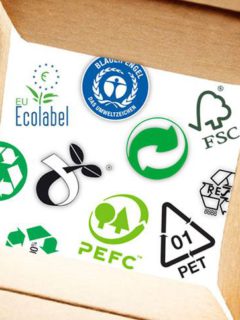Keeping your workplace clean and tidy for you and your colleagues is normal. Waste management is obviously part of that cleanliness. So let’s focus on the most important questions about the waste bag. How do you choose the right size? How is a bin liner made? What exactly do you need a bin liner for? We’ll give you all the information you need to choose your ideal bin liner.
1. What size garbage bag do you need.
At first glance, this question seems very simple, as you would only need to look at the filling capacity of your bin, container or whatever. But the answer is a bit more nuanced than you might think at first glance. The right size depends on the shape of the bin. You can easily calculate the right size using these examples.
The filling capacity of a bin is not the most important factor in choosing the right trash bag. For example, a bin liner that fits into a round bin will not automatically fit into a rectangular bin, even if they have the same fill capacity.
The fill capacity of a bin is not the most important factor in choosing the right bin liner.
Ronny Tournel, Product Manager at RAJA
► 1.1 For round bins
For a round pedal bin, you must first identify the dimensions of the inner bucket. First measure the height and diameter. To find the ideal width of the bin liner, you need to multiply the diameter (Ø) of the inner bucket by 3.14 (π), then divide by 2. The ideal height of the bag is calculated by adding the height of the pedal bin to half its width. Add an extra 10-20cm for the rim.
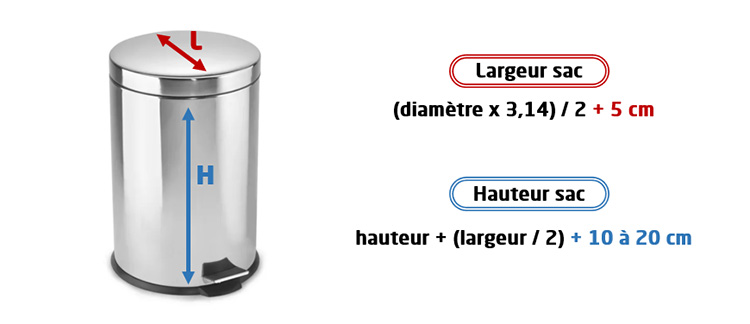
► 1.2 For Rectangular Bins
A rectangular bin – such as a container – is calculated in a slightly different way. The ideal width of the bin liner is calculated by adding the width of the container and the depth, adding at least 5cm for a wide edge. To find the ideal height of the bin liner, take the height as well as the longer side (width), divided by 2. Then add an extra 10-20cm for the rim.
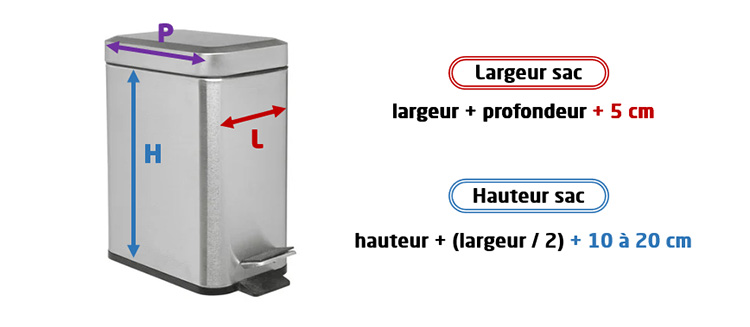
2. Which colour bin bag do you choose?
The colour of a rubbish bag is mainly related to selective collection and waste sorting. Waste sorting avoids mixing different types of waste so that the collected materials and products can be reused as much as possible. The different stages of waste separation are called waste streams. If we want to reuse waste from a particular stream for new products, we call it a circular waste stream.
► 2.1 Transparent
Thanks to the transparency, you can immediately see which waste you have collected and check that it has been correctly sorted. In the same vein, use a transparent bin liner to separate your waste so you can easily sort it later.
For businesses in Flanders, this is certainly a priority. According to the VLAREMA (Flemish regulation on the sustainable management of material and waste cycles), companies are obliged to sort their industrial waste according to the 24 waste streams of the regulation.
What does this mean in concrete terms for transparent refuse bags? Under this regulation, all residual business waste in Flanders must be collected in recycled, transparent refuse bags. This legislation currently applies to bags larger than 60 litres, but from 2023 it will apply to all fill sizes.
► 2.2 Colour
In Belgium, companies are obliged to sort their waste. Fortunately, you can create a colour code to simplify the waste sorting process. With coloured bin bags and even coloured containers or bag holders, you can assign a colour to a certain type of waste. This makes things clearer for your employees and for the waste collection. Below is an example of such a colour code. Of course, you can always create your own colour code.
| Yellow: paper and cardboard | |
| Blue: PMC | |
| Green (light): green waste | |
| Green (dark): glass | |
| Red: plastic | |
| Black or clear*: residual waste |
* According to the Flemish VLAREMA legislation, residual waste from companies must always be collected in a transparent waste bag.
3. What are garbage bags made of?
All garbage bags are made of polyethylene, plastic granules derived from petroleum. These granules are melted to form an elastic paste that can be divided into high and low density polyethylene (HDPE and LDPE). The different variants of polyethylene have specific properties that play a certain role in the use of the bin liner. Before choosing a bin liner, keep the following information in mind. The difference between HDPE and LDPE will have an impact on your choice.
.
► 3.1 What is the difference between high and low density polyethylene?
High density polyethylene is produced at low pressure so that the molecules remain intact as much as possible. This hard polyethylene has high puncture resistance, but it also tears faster. This is precisely why it is more suitable for lighter waste, such as soft plastic. HDPE bin liners are therefore often used in offices and sanitary areas.
Low-density polyethylene is produced under high pressure using a catalyst. The molecular chains are highly branched, which makes polyethylene flexible. But make no mistake, it is therefore stronger, more tear-resistant and more flexible than HDPE. LDPE bin liners are primarily used for heavy or very heavy waste and are often found in a warehouse, construction site or other industrial workshops.
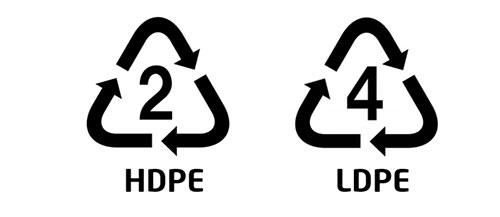
4. What type of waste fits in your trash bag?
Now that you know how to calculate the right size for your trash bag and understand the difference between low and high density, let’s get down to the practical side of things. You want to manage your waste in the best way possible and are looking for a practical solution.
.We define three categories of waste type: light, heavy and very heavy waste. The thicker the layer of the garbage bag, the more protection it offers against bumps, tears and sharp objects. This thickness is measured in microns and is an indicator of the type of waste for which the bag is best suited.
- Does this VLAREMA legislation currently apply to refuse bags larger than 60 litres? From 2023, this will apply to all sizes.
► 4.1 Light waste
These bin liners are perfect for light, non-sharp waste such as soft plastic, used cleaning cloths and standard packaging. Thanks to the closing tie and the sliding tie, these bags can be easily closed and lifted. As you can see, not all bin liners are equipped with a tie. We therefore recommend that you use metal loop ties for bin liners without a closure.
Economical trash bag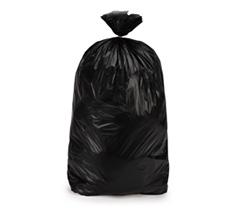 |
Sliding Tie Bag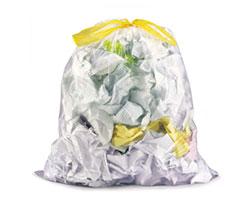 |
| – Thickness: 25 or 30 µm – Capacity: 30 to 110 L – Gussets for more volume |
– Thickness: 23 to 34 µm – Content: 30, 60 or 120 L – Maximum capacity is used – Easy to close and move |
► 4.2 Heavy waste
The “heavy waste” category is considered to be everyday waste such as food. These bags are sturdy and are resistant to shocks and tears. Thus, moving this garbage bag becomes an easy task.
.
Resistant trash bag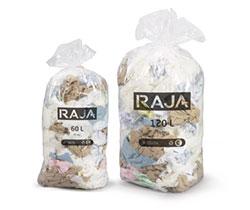 |
Blue Garbage Bag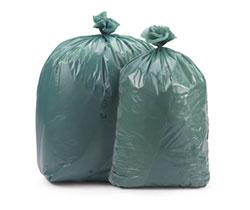 |
Yellow trash bag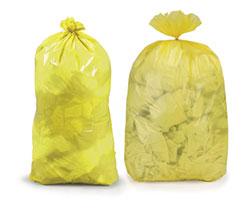 |
| – Thickness: 45 µm – Content: 30 to 140 L – Solid welds – Gusseted for extra volume |
– Thickness: 30 µm – Content: 120 to 240 L – Conforms to the current dimensions – Suitable for separate collection* |
– Thickness: 45 µm – Contents: 30, 60 or 120 L – Bellows for more volume – Suitable for separate collection* |
* Thanks to the remarkable colour, you can easily separate a light type of waste such as paper.
► 4.3 Very heavy waste
These low density polyethylene bin liners are suitable for sharp objects, wood, construction rubble and other heavy waste. These LDPE bags offer solid protection thanks to the reinforced seams, which guarantee protection against shocks and tears. Thanks to this same strength, you can move the bags without any worries and reuse them easily.
Extra heavy-duty trash bag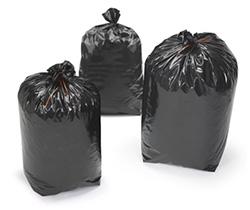 |
Gravel bag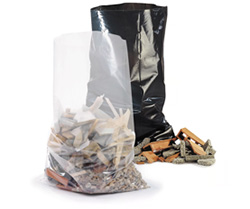 |
| – Thickness: 100 µm – Content: 60, 100 or 120 L – Gussets for more volume |
– Thickness: 140 µm – Content: 55 L – Black or transparent |











